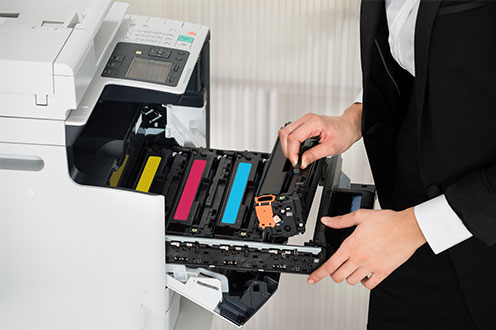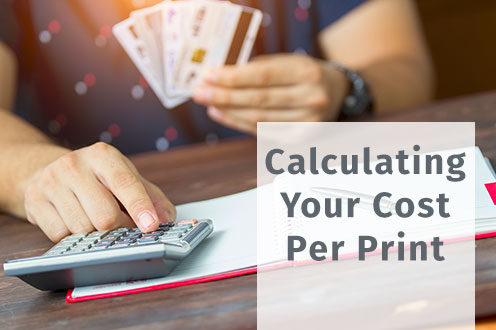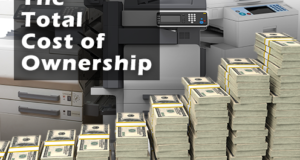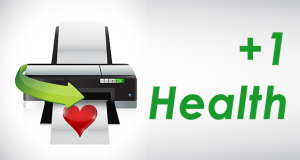There are a couple different ways you can figure out the cost-per-page on any given printer or copier. You can run a print assessment using print management software, which runs tests to gather data and provide you a pretty accurate assessment on your specific device. However, if you’re looking at purchasing a device this isn’t the best solution to get you a better gauge on the impacts that one machine may have over another on your bottom line. For that, you have to take a more manual approach to get that estimate.

The cost-per-print calculations vary by device and manufacturer, so determining the printer manufacturer and model number is an important first step. If you’re browsing out database of machines, you’ll find that here: (screenshot)
or on the machine, in the manual or, (if this is a printer you have access to on your computer), via your computer’s control panel.
Most manufacturers share their page yield figures on their website and most times on the side of their toner cartridge packaging, which makes it pretty easy to get these numbers even if you don’t have access to the machine or toner cartridge itself. Manufacturers test these by either:
- printing a text document that uses toner to cover about 5% of the page over and over again until the toner cartridge (black) is empty, or
- by printing a document that combines text and graphics using toner that covers about 20% of the page until each cartridge (black and colors) are empty.
Next, look online or at manufacturer websites to get an average cost for replacement cartridges. With this info, you’ll finally be able to calculate your cost-per-print for black and white prints and color prints.
For black and white:
- Divide the cost of the toner cartridge by the page yield.
Toner Cost Cartridge ÷ Page Yield = Cost-Per-Print
EXAMPLE: 79.99 ÷ 2200 = 0.036
For color:
- Divide the cost of the color cartridge by the color page yield, then multiply by 3, and finally add the black and white cost per print you found above.
EXAMPLE: [(109.99 ÷ 2600) x 3] + 0.036 = 0.163
While this method isn’t the most accurate, it should give you a pretty clear estimate as you consider machines for purchase. Of course, there are additional factors that can sway these results, like:
- The type of cartridge you select for your math
- The testing performed by manufacturers on toner cartridges
- Choosing a refilled or remanufactured cartridge
- The test documents themselves which can differ from what the user might print
- The age of the printer
- The environmental location of the printer
- How often the printer is used
- And More
Once you’ve purchased your new printer, see if it comes with printer maintenance or counting software to monitor how many pages you get from each ink or toner cartridge. With time, you’ll find this simple math updated with numbers you’ve gathered from experience will help you to be able to predict and budget for future printing-related expenses. Or consider stepping things up with something more robust like print management software.
 CopierGuide Copier and Multifunction Printer Leases and Reviews
CopierGuide Copier and Multifunction Printer Leases and Reviews





